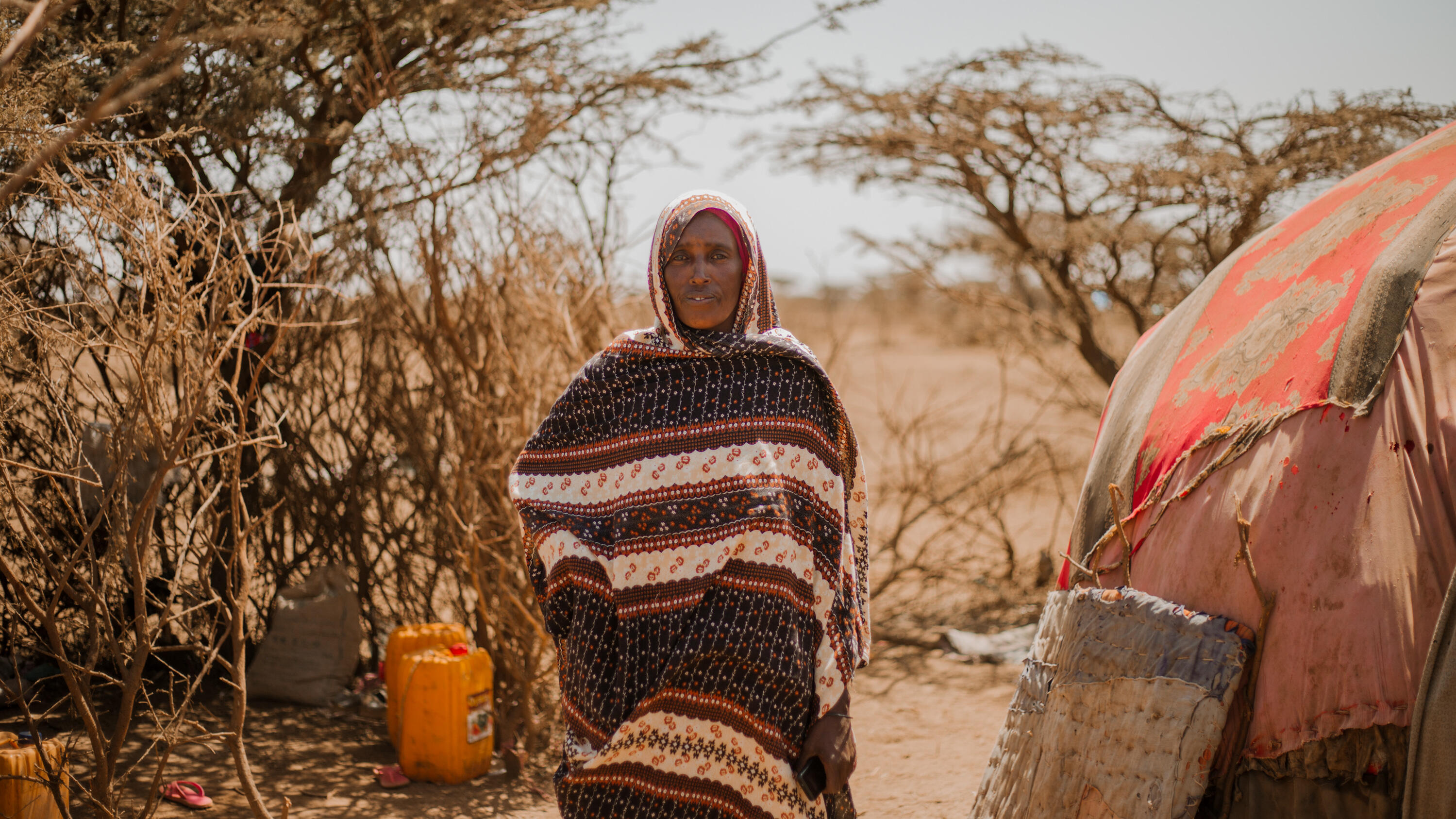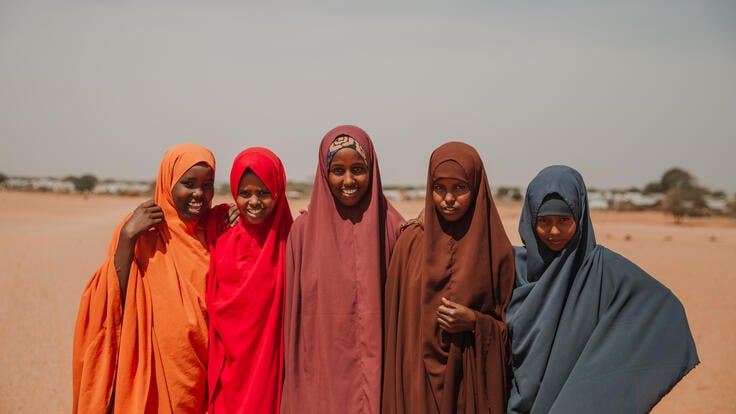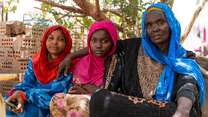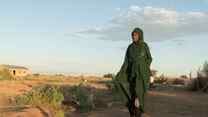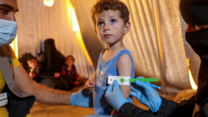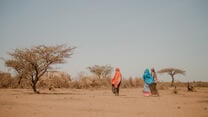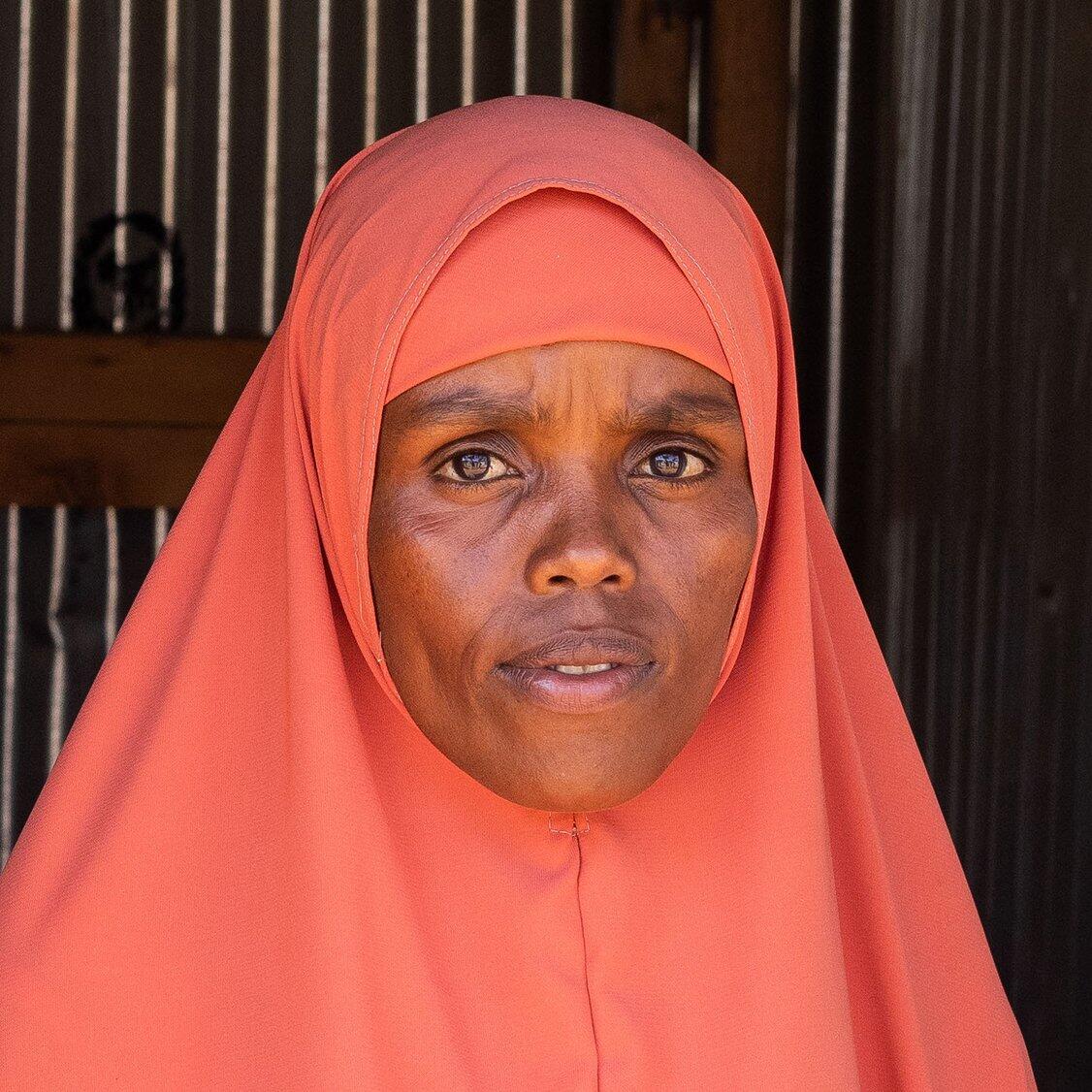Multiple conflicts undermine response to Ethiopia’s food catastrophe
- Ethiopia is heading toward its sixth consecutive failed rainy season, which would prolong a drought already affecting 24 million people.
- Various conflicts across the country are disrupting lives and preventing humanitarian organizations from delivering crucial aid.
- A November 2022 peace deal, if it holds, offers hope for an end to the conflict in Tigray, northern Ethiopia, where 28.6 million remain in need of humanitarian aid.
Country facts
- Total population: 115 million
- Refugees: Nearly 792,000
- People internally displaced: 1.8 million
- Rank in Human Development Index: 173 of 188
IRC response
- Started work in Ethiopia: 2000
Ethiopia, located in the Horn of Africa, enters 2021 with a major confrontation underway in the northern Tigray region between the federal government and the Tigray People’s Liberation Front (TPLF). At the same time, climate change, the biggest locust outbreak in living memory, and the COVID-19 pandemic are driving up the number of people in need to the second highest in the world. The IRC delivers clean water and sanitation, essential supplies, protection services for women and girls, and other emergency assistance to vulnerable Ethiopians and refugees living in Ethiopia while supporting government-provided health services.
The conflict in the northern Tigray region comes at a particularly delicate time for the country. COVID-19 has exacerbated needs, particularly for communities that had already been affected by conflict and natural events. Similar shocks are likely to recur in 2021 due to climate change, political tensions, and the fact that Ethiopia is at the epicenter of the biggest locust outbreak in living memory, which could severely worsen food insecurity in the year ahead.
Ethiopia is second only to Yemen for the total number of people in need in 2021.
Conflict in the Tigray region is driving a rapid rise in humanitarian needs, including refugee movements into Sudan, amid allegations of violence against civilians. The conflict and enduring political tensions increase the risk of greater conflict and instability in other parts of Ethiopia.
Prior to the conflict, the COVID-19 pandemic had already doubled the number of people in need in Ethiopia, primarily driven by limits on economic activities, increased unemployment and interrupted education for more than 26 million children across the country.
Ethiopia is also the epicenter of the largest locust outbreak in decades. At least one million Ethiopians suffered crop losses due to the locusts; as a result, 11 million Ethiopians are forecast to face crisis levels of food insecurity.
Moreover, one million people were affected and 300,000 people displaced by flooding in 2020 alone and, with climate change increasing the frequency of extreme weather patterns, 2021 may also see major natural-driven emergencies
The IRC’s mission is to help people whose lives and livelihoods are shattered by conflict and disaster to survive, recover and gain control of their future.
We first began assisting people in Ethiopia in 2000, providing essential aid to over 100,000 refugees from neighbouring countries and more than 500,000 Ethiopians affected by previous droughts. Since then, the IRC has expanded to provide a wide range of assistance for refugees living in camps and for vulnerable Ethiopian communities throughout the country. In 2013, the IRC opened the largest water system for any refugee camp in the world.
As Ethiopia hosts approximately 800,000 refugees and asylum seekers, and works to recover from the effects of drought, conflict and other economic shocks, the IRC is focusing our efforts in affected communities by:
- providing cash and basic emergency supplies such as household kitchen sets, blankets, and buckets and jerrycans, as well as supplies to meet the specific needs of women and girls;
- building and maintaining safe water supply systems and sanitation facilities;
- educating communities on good hygiene practices to prevent the spread of disease, including COVID-19;
- supporting government partners and community workers in primary health care clinics on preventing and treating common childhood illnesses and addressing family planning needs;
- constructing classrooms, training teachers and ensuring access to safe, high-quality, and responsive education services;
- introducing new livelihoods-related skills and job opportunities to youth and vulnerable households.
The IRC calls on all parties in Ethiopia’s recent conflict to prioritise de-escalation and protect civilians and the most vulnerable.
It is absolutely imperative that escalating tensions and conflict do not prevent the delivery of humanitarian aid. Hostilities must not interfere with efforts to combat the locust outbreak, which could have far reaching implications for Tigray, Ethiopia, and the region.
The IRC will continue to provide a wide range of emergency assistance and long-term support for vulnerable refugee and Ethiopian communities—including at-risk groups such as unaccompanied children and people with disabilities—to help them cope with and recover from crises.
In 2015, the IRC and our partner organisations in Ethiopia provided:
1.5 Million
Each year, millions of people -- particularly women and children -- die from preventable causes in countries affected by violent conflict and natural disasters.
1 Million
Before the IRC built a water point near his house, 13-year old Abdi was forced to forgo school in order to travel for hours just to find water for his family.
19,000
Education is the ultimate empowerment tool: it is what enables people to drive their own health, safety and prosperity.
children and youth with access to school and other educational opportunities.
Learn about our education work.